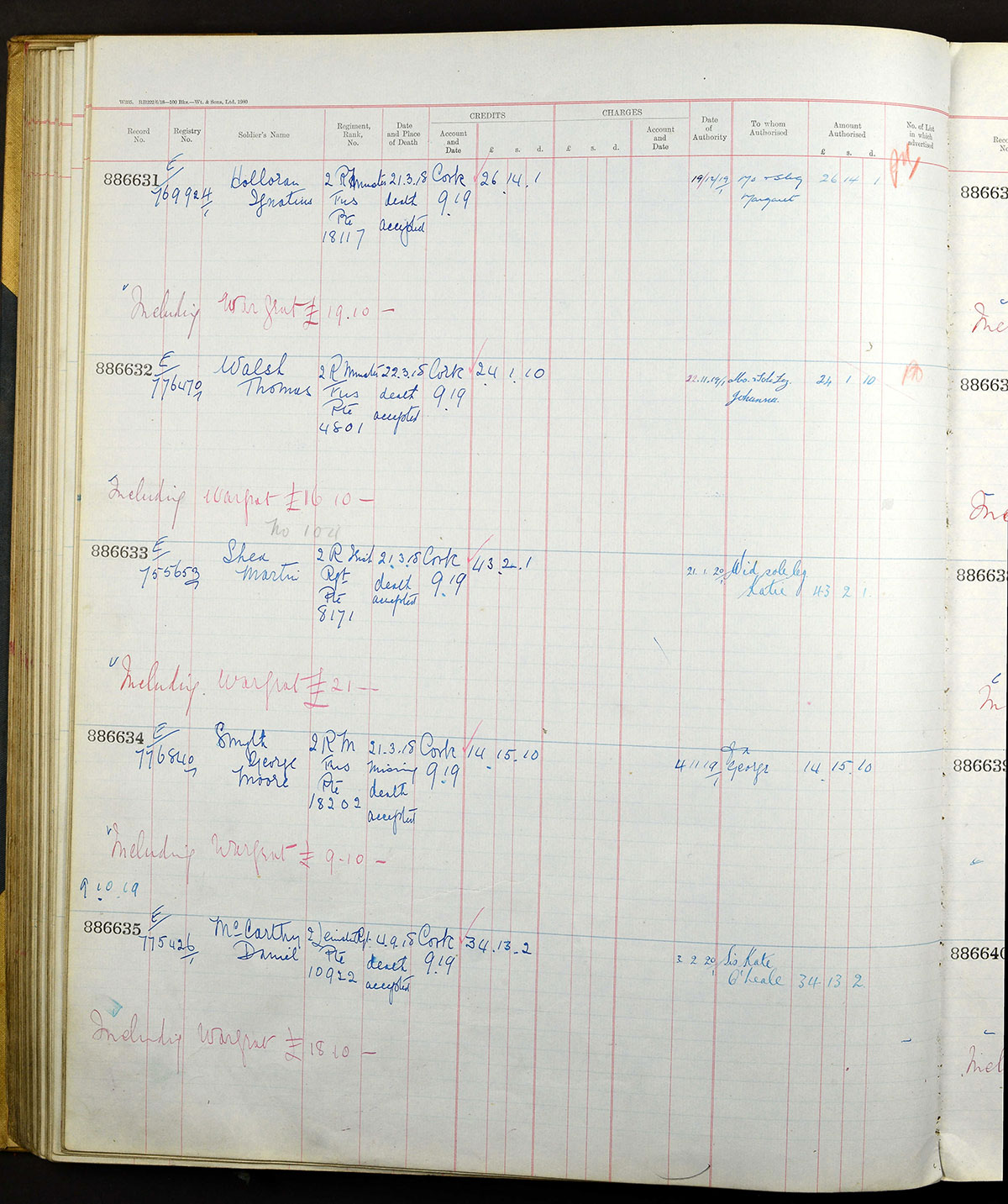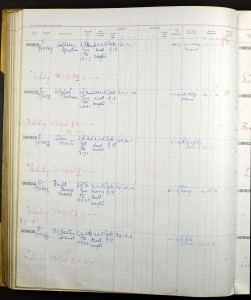Ignatius Holloran was born on 1st February 1892, the eldest son of George and Margaret Holloran who lived at Springfield View, Clowbridge (the row of houses on the main Burnley road, some demolished, which now includes The Beijing Chinese restaurant). Although their home was just within the borough of Burnley, where Ignatius’ birth was registered, they chose to worship at St James the Less church, which was also where Ignatius was baptised on 18th February.
Like a number of parishioners at the time, George was one of many Irish who had left their country in the post-famine years and settled in east Lancashire and it was perhaps his Irish heritage which later influenced Ignatius’ choice of army regiment on his enlistment.
Margaret, Ignatius’ mother, was from Rochdale and it was to there that the family moved around the turn of the century. The census records of 1901 and 1911 show them living at different addresses in the town and by 1911 they had 4 children. At that time Ignatius was 19 years old and shown as working in asbestos production, a dangerous material which, ironically, may very well have itself resulted in Ignatius’ premature death, had the war not taken him first.
When war came Ignatius must have been amongst the early volunteers. Although his actual enlistment date cannot be found, the post-death war gratuity paid to his family is consistent with an enlistment date of around October 1914. He chose to join the Royal Dublin Fusiliers which, like all Irish regiments at that time, was part of the British army. Throughout the war, heavy casualties resulted in mergers of many regiments and the Dublin Fusiliers were no exception, with Ignatius being transferred at some point to the Royal Munster Fusiliers, also an Irish regiment, as Private no 18117.
In May 1915, in the Dublin Fusiliers, Ignatius left Britain for Gallipoli. His medal record shows him having landed there by 11th June and it was probably during the battles there, with the Irish regiments suffering heavy casualties, that his regiments were merged. Ignatius survived the Gallipoli campaign and was amongst the troops evacuated from there to Egypt.
From Egypt Ignatius was deployed to France; to the Western Front where the 2nd battalion of ‘The Munsters’ had been since the start of war. Throughout the whole of the war, this battalion took part in some of the heaviest and costliest battles and it was to be in one of these that Ignatius lost his life.
On the morning of 21st March 1918 the Munster Fusiliers were amongst those defending the village of Templeux-Le-Guerard when German forces attacked in thick mist, so thick that the Irish regiments could not see their own front line, rendering their gun defences useless. This was to mark the start of the battle of St Quentin, the first day of what was to be one of the most intense of all the Somme battles, with thousands of men, on both sides, being killed on that first day, including Ignatius. The village of Templeux-Le-Guerard was lost and not re-taken for some months.
Ignatius’ body, along with many of his comrades, was recovered from the battlefield and he was later buried at the nearby British cemetery. The cemetery had been started in 1917 as the war raged in the area and eventually some 750 bodies of British soldiers, many still unidentified, were laid to rest here.
On 19th December 1919 Ignatius’ effects and war gratuity, totalling £26.14s.1d, was paid to his mother, Margaret.



Leave A Comment